Thanks for taking the time to read this. I am modifying my OpenGL application to use GLSL shaders, its purpose is to visualize 3D atomistic models, including tetrahedra (and other polyhedra) using GL_TRIANGLES.
Note: in the examples bellow, colors and alpha channels are identicals.
Before I had:
void triangle (GLFloat * va, GLFloat * vb, GLFloat * vc)
{
glVertex3fv (va);
glVertex3fv (vb);
glVertex3fv (vc);
}
void tetra (GLFloat ** xyz)
{
// xyz Contains the coordinates of the triangles
// ie. the 4 peaks of the tetrahedra
// bellow 'get_normal' compute the normals
glBegin (GL_TRIANGLES);
glNormal3fv (get_normal(xyz[0], xyz[1], xyz[2]));
triangle (xyz[0], xyz[1], xyz[2]);
glNormal3fv (get_normal(xyz[1], xyz[2], xyz[3]));
triangle (xyz[1], xyz[2], xyz[3]);
glNormal3fv (get_normal(xyz[2], xyz[3], xyz[0]));
triangle (xyz[2], xyz[3], xyz[0]);
glNormal3fv (get_normal(xyz[0], xyz[3], xyz[1]));
triangle (xyz[0], xyz[3], xyz[1]);
glEnd ();
}
That displayed (the proper result):
Then I modified the code to use the following shaders:
#define GLSL(src) "#version 130\n" #src
const GLchar * vertex = GLSL(
uniform mat4 viewMatrix;
uniform mat4 projMatrix;
in vec3 position;
in float size;
in vec4 color;
out vec4 vert_color;
void main()
{
vert_color = color;
gl_Position = projMatrix * viewMatrix * vec4(position, 1.0);
}
);
const GLchar * colors = GLSL(
in vec4 vert_color;
out vec4 vertex_color;
void main()
{
vertex_color = vert_color;
}
);
And now I got:
So obviously something is wrong with the colors/lighting, and I whish I could understand how to correct this, I think that I have to use geometry shaders but I do not know where to find the information to now how/what to do, thanks in advance for your help.

